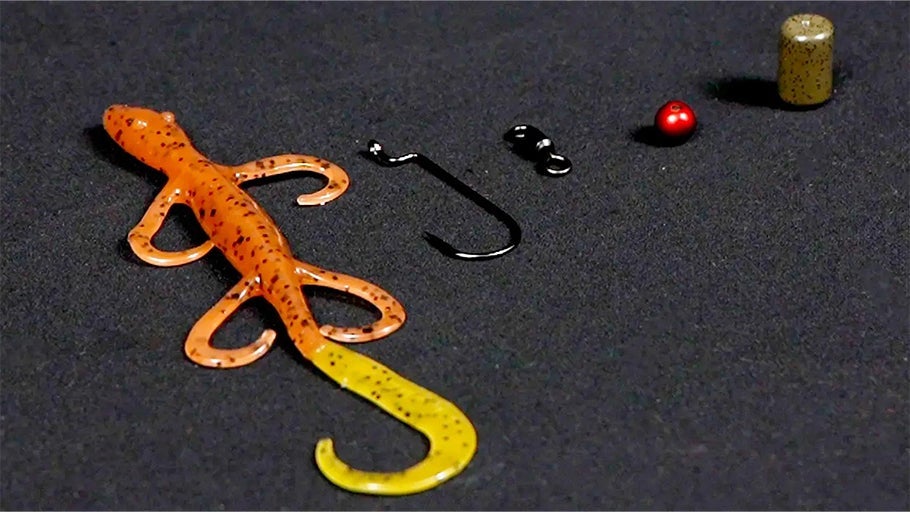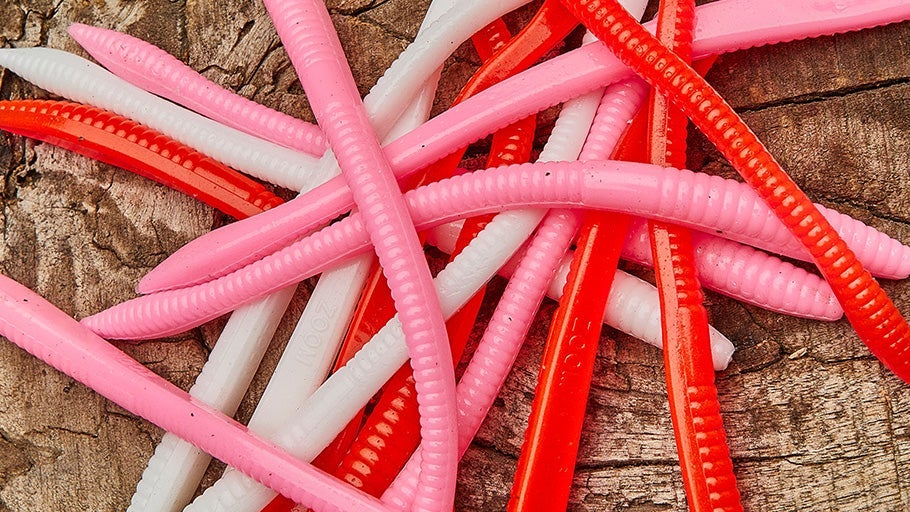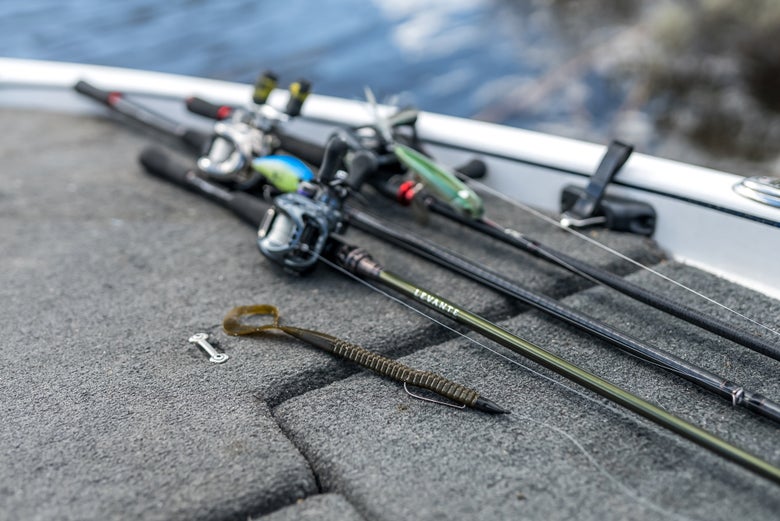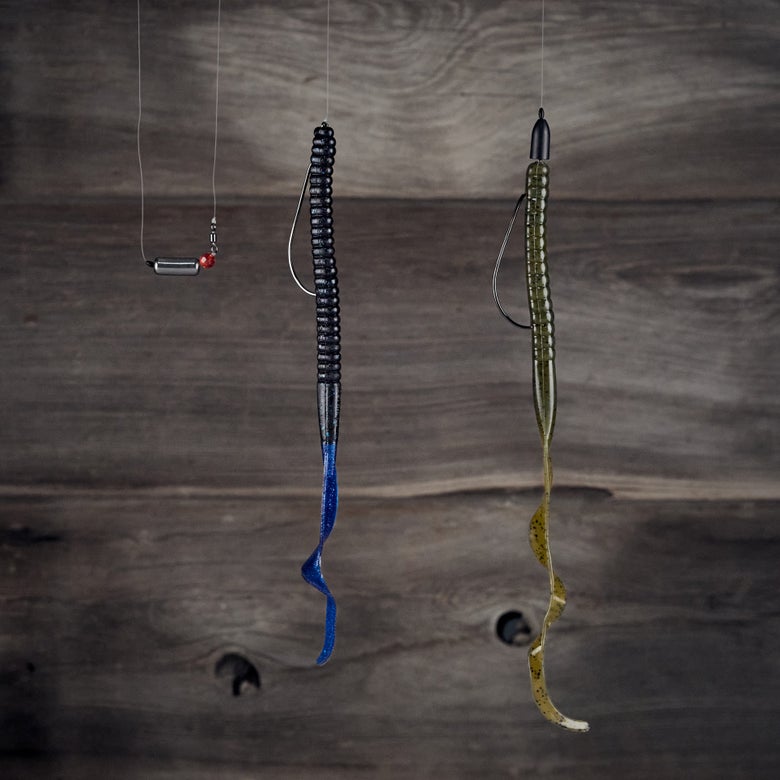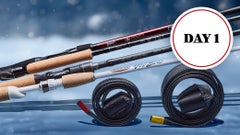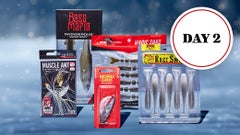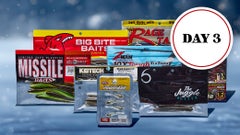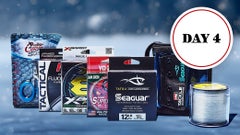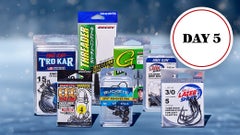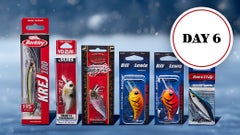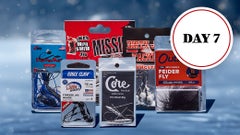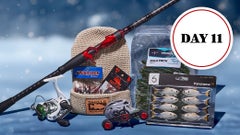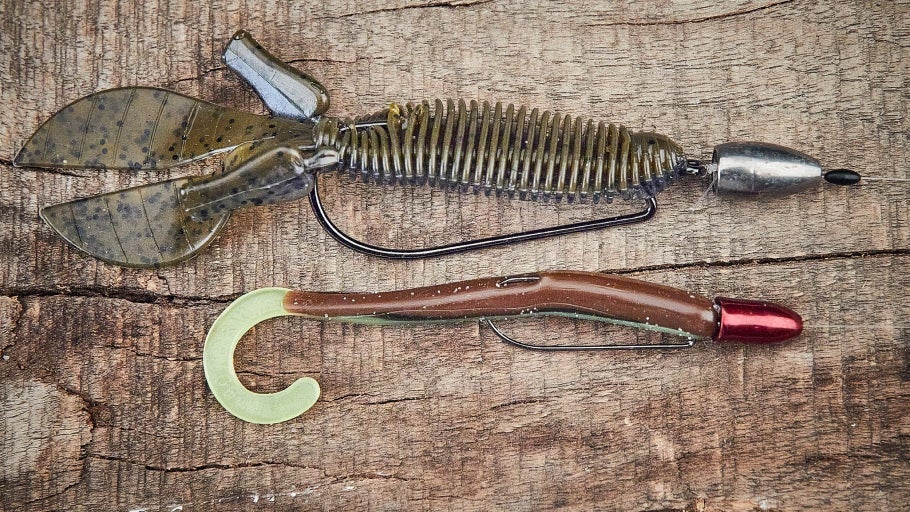
Curly Tail Worm Gear Guide
With so many new products flooding the bass fishing market, it’s easy to get caught up in the latest trends and techniques, but don’t overlook the timeless fish-catching power of the curly tail worm. Designed to move tons of water and slip through dense cover with ease, the slender body and large ribbon tail of a curly worm delivers erratic tail-thumping action and snag-free performance that’s ideal for navigating deep water structure.
An excellent alternative once your lakes have seen hundreds of crankbaits and jigs, the curly tail worm is traditionally a summer technique for targeting bass taking shelter in laydowns, brush piles, deep points, offshore structure, or channel swings near cover. In this comprehensive curly tail worm gear guide, we’ll provide a full tackle breakdown, cover rigging methods and retrieve techniques for shallow and deep-water fishing, and discuss our favorite color choices for various fishing conditions.
Curly Tail Worm Rods
When selecting a rod for curly tail worms, always consider what type of cover you intend on fishing and the size of worm you are going to use. In most cases, a heavier duty jig rod or a light-duty flipping stick will get the job done, but if you are fishing near heavy cover with a magnum-sized worm, a longer rod in the 7’3”-7’6” range with a medium heavy to heavy power rating and fast taper is ideal. When the cover is sparse you can scale down to your Texas rig rod or something closer to the 7ft range, but make sure the rod has enough power and backbone to direct fish away from snags and cover.
Curly Tail Worm Reels
A casting reel with a high-speed gear ratio allows you to pick up slack line quickly so you can get in position to drive and set a large worm hook. Curly tail worms often excel when fished around nasty cover, so added speed helps anglers rapidly manage line after a bite to remove and direct fish away from cover. Any 100- to 200-size casting reel with a 7:1 – 8:1 gear ratio should suffice but be sure to consider the size of line you’re going to use. If you’re using 20lb test or more, a 200-size casting reel offers more line capacity to accommodate larger diameter fishing lines.
Curly Tail Worm Line
Heavy fluorocarbon is the preferred line when throwing a curly tail worm as it offers excellent sensitivity, high abrasion resistance, and becomes virtually invisible underwater. The low-stretch attributes of fluorocarbon allow for deep hook penetration on heavy hooksets and provide plenty of power to drive the hook beyond the barb. Like rod selection, the ideal line rating varies based on the thickness of cover and the size of worm you’re throwing, but keeping these factors in mind, consider using fluorocarbon line in the 12-20lb test range with 15lb being a good starting point.
Modifications & Rigging
There are many ways to present a curly tail worm, but the most effective rigging method can vary based on your fishing style, where the fish are positioned, or what type of structure or vegetation is present. If you’re flipping a twelve-inch worm around shallow vegetation and heavy cover you may need to Texas-rig a mega 11/0 worm hook just to avoid snags and short bites. Alternatively, if you’re dragging long stretches of rocky shoreline or casting to deep offshore structure, a Carolina rig or magnum shakey head will enhance bottom contact feel and provide increased action as it deflects off hard cover.
Always size the hook to the size of the worm and consider using a light-wire option to boost hook penetration and hooking ability at the end of a long cast. When the fishing is tough, be sure to keep a scent marker on hand so you can add a touch of color and scent to the tail of your curly worms to get a few extra bites.
Retrieve Tips & Tricks
Offshore curly tail worm fishing is much like fishing a football jig – drag, hop, pause, repeat. If the cover isn’t overly snag-ridden when fishing shallow, try removing the peg to change the falling action of the curly tail worm. When the weight is unpegged, the sinker settles on the bottom before the plastic, and with a hard pop of the rod tip, the worm snaps back towards the sinker and creates erratic tail action that triggers heart-stopping reaction bites. If you’re fishing deeper water, you can also experiment with lift and fall stroking retrieves or dragging the curly tail worm on a shakey head using your rod or trolling motor.
Colors
Starting with your confidence color is never a bad idea, but you’ll want to take water clarity and light penetration into account when selecting the color of your curly tail worm. This style of worm fishing typically involves accessing low-light areas like deep-water structure, matted vegetation, or overhanging cover, so darker shades are often used to provide more contrast underwater and make them easy to locate. Green pumpkin is a stand-by color that performs in practically any condition, but some of the most popular curly tail worm colors are purple, brown, red and black variations like junebug, plum, red bug, blue fleck, and black n blue.
Compatible with shallow or deep-water fishing applications, curly tail worms present opportunities for anglers of all skill levels to catch fish in both numbers and size and doesn’t require specialized fishing gear. So, the next time you mark fish or bait near structure or vegetation, remember to slow down and reach for the vibrating tail action of a curly tail worm to entice big bites from lethargic bass looking for a substantial meal.
Related Articles

